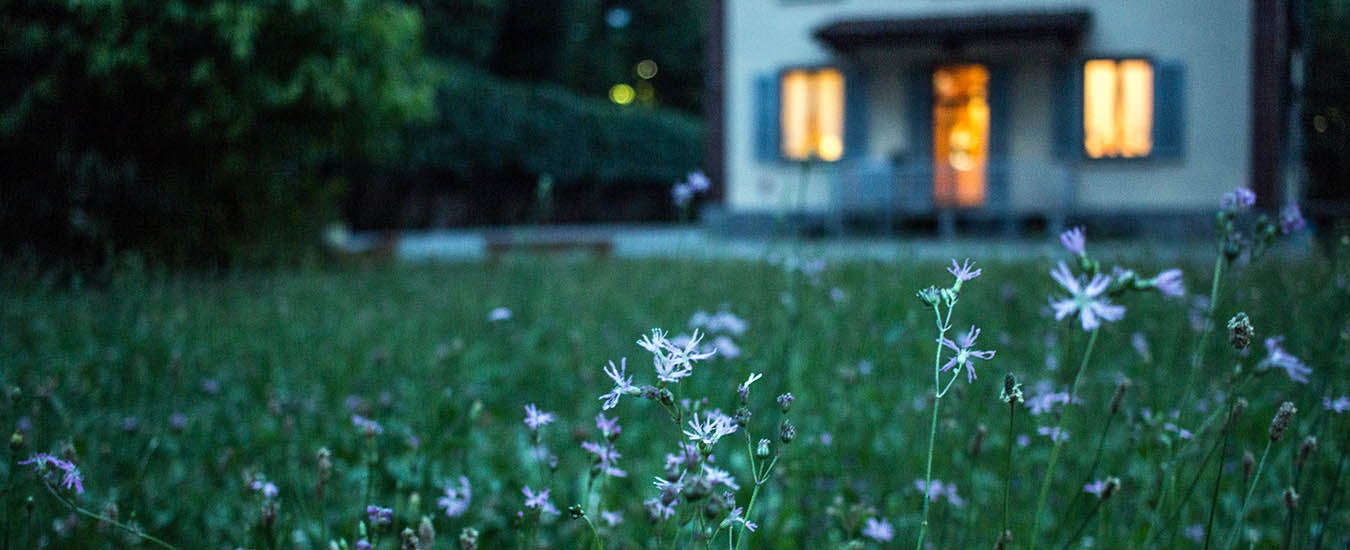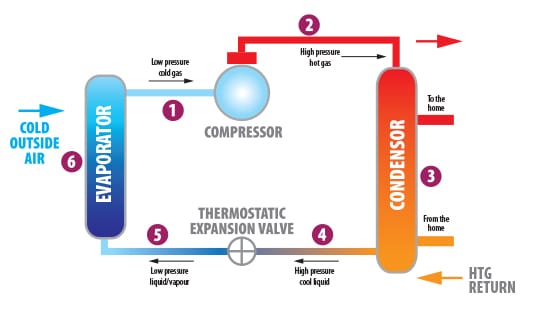The money-saving heating and air conditioning system in one
For those of us who aren’t technically inclined, heat pump technology is a bit of a mind bender. We’re told it’s basically a reverse refrigerator—as if that clears the matter up once and for all.
It might be easier to grasp the concept in human terms. If you’re the kind of person who can see the good in everyone, you can probably understand that even cold air contains some heat. It’s like looking at a near empty glass and perceiving that it’s actually a tiny bit full. A heat pump separates the heat from the cold, and directs warm air into your home in winter.
Unlike any other kind of heating system, it can also do the opposite, serving as an air conditioner by sending cool air indoors on hot summer days.
Pump technology
Ground-source heat pumps: These pumps draw heat from the earth via a deep well or an array of horizontal piping buried below the frost line. This type of system, known as geo-thermal, is so efficient because the temperature below ground remains above freezing even on the most frigid winter days and stays cool even under a blazing July sun. However, the necessary trenching or drilling is pretty expensive upfront, resulting in total installed costs upwards of $25,000.
Air-source heat pumps: These systems don’t require all that piping, so they’re considerably cheaper and easier to install, but they also have a tougher job to do: they extract a bit of heat from the outside in January or cool air on a summer scorcher. Luckily recent technological advances have improved this type of heat pump’s efficiency.
The most significant change is in the design of the compressor—the unit outside the house, which compresses refrigerant running through a coil (as in your fridge). Inverter technology allows the compressor to operate at variable speeds, reducing on-off cycling and the attendant surges in power demand.
You’re still using electricity to run the thing, but you’re drawing half or even a third as much power as you would with conventional (resistance) electric heating. If your home’s electrical system has a transfer switch so a portable generator can be connected during blackouts, you could wire your heat pump to the sub-panel that carries high-priority circuits and continue to heat as usual.
This air-source heat pump technology can be used for central systems, with the heated or cooled air distributed throughout the house via ductwork.

All electric air-source heat pumps come equipped with their own supplementary heating system in the form of electric-resistance heaters.
Bivalent heat pumps: These pumps are a special type. Developed in Canada, they use a gas- or propane-fired burner to increase the temperature of the air entering the outdoor coil. This allows the unit to operate during very frigid outdoor temperatures.
Ductless heat pumps: Technology has really boosted efficiency in the ductless heat pump, which is a localized heater. These are often called ductless mini-splits because of the split between the outdoor compressor (which looks and sounds somewhat like an air conditioner box) and the air-handling unit or “head” mounted on the interior wall.
Mini-splits are compact, relatively inexpensive and energy efficient. Older models maxed out at about -10 degrees Celsius, which meant in our climate they were virtually useless during periods of cold winter weather. But the newer ones can extract heat from the outside air when the temperature drops as low as -15, -20 and, in some cases even down to -25 degrees Celsius.
Heating technicians and insurance companies don’t yet consider these ductless heat pumps a primary heat source, so you need another system in place, fired by oil, gas or electrical resistance. The heat pump simply allows you to minimize your reliance on that other, less-efficient source.
The most basic ductless mini-split can be installed in half a day. It’s a minimally invasive procedure, requiring just a three-inch hole through the wall, but it should be done by a certified HVAC technician. For the smallest one-room unit, rated at 9,000 BTU, you could get away with an installed cost as low as $3,500.
A 12,000 BTU unit would be suitable for 300- to 500-square feet of living space, while an 18,000 BTU unit could heat up to 900-square feet. You can also get multi-head ductless mini-split models, providing heat to as many as four locations in the house. But these are less efficient than the single-head ones, due to heat loss in the refrigerant lines. It’s a good idea to look for the Energy Star compliance sticker.
Proper sizing of heat pumps is important because a unit with excessive capacity will cycle on and off more frequently, resulting in reduced efficiency and, potentially, premature mechanical failure. They’re meant to operate steadily, not like an on-demand heater that you crank up when you feel a chill.
You should not turn the thermostat way down at night and expect your heat pump to bring the temperature back up quickly in the morning. Similarly, a draughty old house is not considered a good fit for a heat pump. You would be better off spending the money on insulation and air sealing.
The boom in ductless mini-splits has brought some pretty aggressive marketing and competitive pricing. There are online distributors selling units cheaply, and there are unlicensed installers drumming up business.
Do your research
You should look closely at the warranty, consider the availability of parts and service, and determine what recourse you have in the event of a problem. An air-source heat pump should last at least 15 or 20 years.
Dealing with a reputable local company improves the odds you will recoup your investment within a few years and continue to save on energy costs for a long time afterwards.

